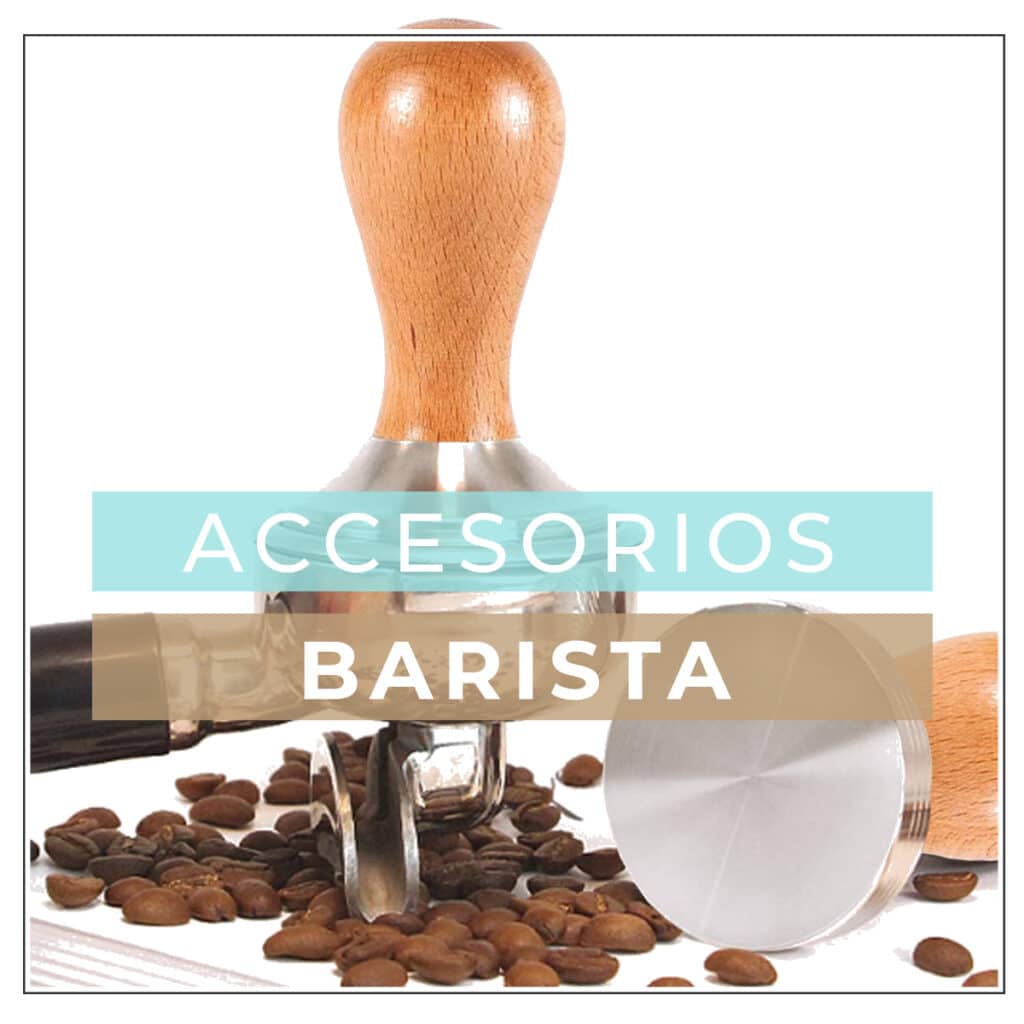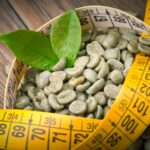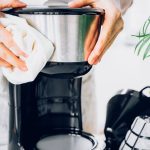The most coffee lovers are passionate about that milk foam that has the coffee from your favorite coffee shops or restaurants. Something that cannot be achieved at home with traditional coffee machines, such as Italian, drip, etc. But just because the machine itself doesn't have a vaporizer doesn't mean you can't enjoy the same result at home too. You can make milk foam with a few simple tricks that we show you here.
Also, if you can't go to your usual coffee shop due to the restrictions due to the pandemic, or you are in quarantine, what better than learning how to prepare a delicious coffee with foam just as it is prepared by professional baritas...
What you should know about milk cream

In many places, milk cream is spoken of as a synonym for milk foam, but they are not the same. Many people confuse both terms. The cream of the milk is what many call cream, that fat substance with a white hue and that forms emulsified on the milk, like a thick layer. This usually happens when milk is brought to a high temperature, especially in milk that has not been skimmed.
La milk foam It is the result of emulsifying milk to make that rich foam that you like so much in your coffee, or for the famous Latte Art. This way you can get delicious cappuccinos and other lattes.
This is not something important, you can call it what you want, but I think it was fair to make this distinction so as not to lead to confusion. Can call her whatever you want if you really know what you are looking for…
types of foam
Regardless of this, you should also know the types of foam you can get, since this will affect the result and use:
- Whole milk (soft and durable foam): whole milk is the one that contains the most fat, therefore, the foam obtained with this type of milk will be much softer, more flexible and durable. It can flow without falling apart easily and is the preferred option for barites, especially for decorating coffees using Latte Art, as the result will remain intact longer due to the 2% fat globules present.
- Skimmed milk (light and short-lasting foam): having been skimmed, it has lost some or all of the fat from whole milk, so it will lack those globules. This makes it more difficult to froth this type of milk, and when it is achieved, the foam is very light and will easily break down. The bubbles of this type of foam are usually larger and its flavor is very neutral, compared to the flavor of whole milk foam. As you see, it's a matter of fat.
What types of milk can I use for the foam?
But the fat is not the only thing that will affect the result of the foam and its flavor, there are also other important factors, such as the type of milk. What few know is that they can be used different milks for the foam:
- Cow milk: Cow's milk is the one that is usually used. I have already commented previously that one result or another can be achieved depending on the fat content of the milk. But you can also vary the result with different products on the market:
- Calcium fortified milk: Contains modified milk substances, such as mineral concentrate and whey protein. Therefore, this type of milk foams quite easily and could be the best option.
- UHT: ultra-pasteurized milk is very common in supermarkets. In this case, very high temperatures are used for its treatment before packaging. That heat shock enhances the foaming properties of proteins. Therefore, this type of milk will also produce abundant foam and will be very firm compared to normal pasteurized milk.
- Without lactose: those who have some type of intolerance and want to use this type of milk, should get the brand that has the highest amount of protein possible. You can look at the nutritional table of each container to choose the ones with the highest amount of protein so that the foam is of greater volume and with finer bubbles.
- Semi/Skimmed: I have already mentioned that they will produce a lighter, tasteless foam that fades easily.
- Sheep or goat milk: this type of milk has protein and fat similar to that of the cow, so the results will be very similar.
- Vegetable milks: You can also use other types of vegetable milk, if you are lactose intolerant or vegetarian/vegan, such as soy, almonds, hazelnuts, tiger nuts, etc. This will give a very special touch to your coffee. The one that gets the best foam is soybean, since it is the one with the highest amount of protein. Therefore, your foam will be stable and firm. With the rest of vegetable milks you can also foam, but it will be a lighter and more delicate foam, similar to that of a skimmed cow's milk...
How to make foam at home

Whichever type of milk you choose, what you need to know is how to prepare a good milk foam at home. The best option is to have a coffee machine with an evaporator, obtaining the best result and in the easiest way for the user. But if you don't have one of those machines, there are also other options to enjoy milk foam. Here you have all the keys. This procedure is a bit tediousAnd not everyone is good at it. Even more so if they do not have enough energy for the shake.
With electric skimmer
To make it the way faster and not leave your hand in it, you can save a lot of calories by using a electric skimmer. They are very simple to use and cheap devices. As for the procedure, just follow these steps:
- Put the milk you want to froth into the container.
- Activate the frothing device to beat the milk and generate foam (some even have a function to heat it).
- Once you've been whisking for a while, the foam will be created.
Keep in mind that time can vary, so you should follow the manufacturer's recommendations. Some have a little powerful battery-powered motor and usually take longer, others are somewhat more powerful and do it in the blink of an eye...
With the Nespresso Aeroccino

Some electric coffee makers, such as the Nespresso AeroccinoThey have tools to create quality milk foam with little effort. If you have one of these machines, get the foam in seconds:
- Put the milk in the Aeroccino accessory.
- The lid closes.
- You place the glass on the electric base.
- You press the button and the LED will turn red to indicate that it is already working in hot mode. If you want to generate cold foam, you can press the power button and hold it for more than 1 second and it will turn blue.
- Look through the transparent part of the lid and you will see how the foam forms. The moment to press the button to stop the appliance is when it seems that the milk is going to come out, sticking to the transparent plastic of the lid. That means that it has increased its volume due to the foam.
- In less than 70 seconds you will have a very creamy milk. Now you open the lid and very carefully pour the liquid milk without letting the cream fall into a glass.
- Now, you can use a spoon to catch the foam of the Aeroccino and deposit it on top of the coffee.
With manual foaming jug
You can use a cheap frothing pitcher or use any other jar or container that has a tight-fitting lid. The steps to follow are very simple, although it will involve making you work a little:
- Put the milk in a clean jar. The container should be about twice the capacity of the milk you are going to use, so that it can move around inside. For example, if you use 150 ml you can use a container of 250 or 300 ml.
- Close the lid of the container tightly.
- Beat the container by shaking vigorously for about 30 seconds to oxygenate the milk and make it emulsify. If you see that with 30 seconds and the intensity you have given it is not enough, increase the time and intensity. Ideally, it should almost double in volume.
- Now, remove the lid from the container and put it in the microwave to heat it up. This will make it thicken a bit and become foamy.
- It will be ready to use it in your coffee or any other drink.

With an espresso machine with steamer
If you have one espresso machine with steam arm, To get the perfect foam you can do the following:
- Put the milk in a glass or pitcher.
- Insert the vaporizer arm into said glass/jug. The tip must be submerged.
- Activate the vaporization function of your coffee maker.
- Keep the glass and you will see that the milk begins to stir, gradually generating foam.
- When you consider that it has the right consistency (if it is not auto and it stands up on its own), you can stop and remove the glass.
- Now you can add the foam to your coffee and clean the steam arm.












